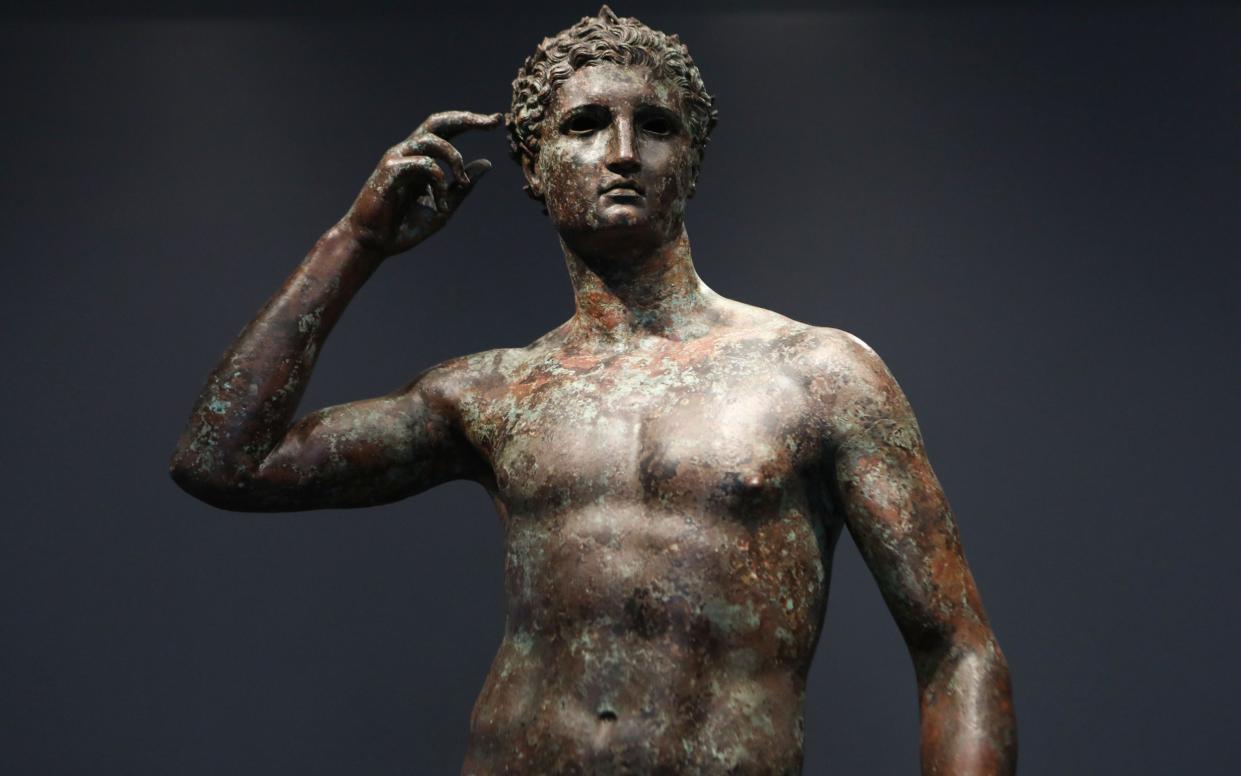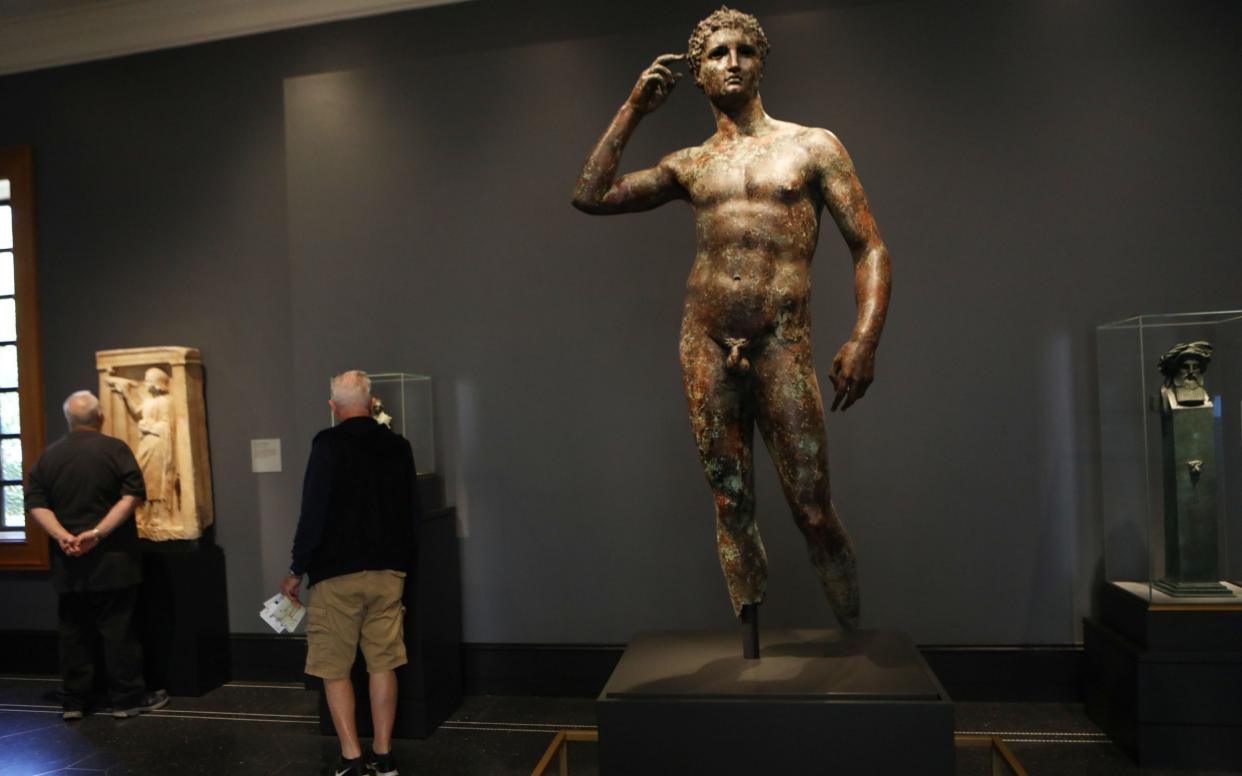Getty Bronze must be returned to Italy, Strasbourg court rules

The Getty Trust in the US must return to Italy one of the most prized pieces in its collection, an ancient Greek bronze of a young man, the European Court of Human Rights (ECHR) has ruled.
In a unanimous decision, the court in Strasbourg ruled that the J Paul Getty Trust had acted with “negligence or bad faith” when it bought the statue in 1977 for $4 million.
The life-size bronze, known as Victorious Youth, was dredged up by fishermen’s nets off the coast of central Italy in 1964.
It is a star attraction at the Getty Villa Museum in Malibu in California, where it has been on display ever since it was purchased.
The ECHR said Italy has every right to demand the return of the artwork, which dates from 300BC to 100BC.
Italy had issued a confiscation order for the statue, which the Getty Trust appealed against.
“The court held that owing, in particular, to the Getty Trust’s negligence or bad faith in purchasing the statue despite being aware of the claims of the Italian state and their efforts to recover it, the confiscation order had been proportionate to the aim of ensuring the return of an object that was part of Italy’s cultural heritage,” the judgment said.
Nicknamed the Getty Bronze, the 5ft-tall statue depicts a young athlete raising his right hand to an olive wreath around his head.
It has been attributed to Lysippos, Alexander the Great’s personal sculptor.

The bronze is believed to have sunk with the ship that was carrying it to Italy after the Romans conquered Greece.
After being found in the nets of Italian fishermen trawling in international waters in 1964, it was allegedly buried in a cabbage patch and hidden in a priest’s bathtub before it was taken out of Italy.
It was put up for auction in Munich by a Liechtenstein-based company. It was bought by the Getty Trust, shipped to the US in 1977 and arrived at the Getty Villa in Malibu in 1978.
The Getty Trust has always maintained that it bought the artwork in good faith.
Successive Italian governments say it was exported from the country illegally and have for years been trying to recover it.
‘Unequivocal ruling’
Gennaro Sangiuliano, the culture minister, welcomed the ECHR decision, saying: “The court in Strasbourg has recognised Italy’s rights with an unequivocal ruling.”
“The judges were very clear as to the ownership of the statue, which was found in waters close to the coast of the Marche region and then exported overseas. We will continue with renewed determination our efforts to have the statue returned to Italy soon.”
In 2010 an Italian court in Pesaro in the central region of the Marche ordered it seized and returned, ruling that it had been dredged up by an Italian-flagged fishing boat.
That decision was upheld by Italy’s High Court in 2018, but the Getty Trust lodged appeals on points of law.
The trust argues that Italy has no right to claim the bronze because it is Greek, not Italian. They also say that it was found in international waters and that it was not part of Italy’s cultural heritage.
In 2019 Italy’s Supreme Court also ruled that the statue should be returned, noting that it should be considered part of Italian cultural heritage because there had been “a continuum between Greek civilisation, which had expanded onto Italian territory, and the subsequent Roman cultural experience”.
The ruling by the ECHR on Thursday was a chamber judgment. The two sides now have three months to request that the case be heard by the court’s Grand Chamber for a final ruling.
In response to the court’s ruling, the Getty Trust reiterated its argument that the classical statue was neither the work of an Italian sculptor nor discovered in Italian waters.
“We believe that Getty’s nearly 50 year public possession of an artwork that was neither created by an Italian artist nor found within Italian territory is appropriate, ethical and consistent with American and international law,” the institution said in a statement sent to The Telegraph.
“The Getty is carefully considering the possibility of requesting a review before the Grand Chamber of the ECHR. If necessary, the Getty will continue to defend its possession of the statue in all relevant courts.”


